Ace Of Wands: The Power Of Atep, Part 2
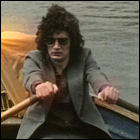 ITV airs the 31st episode of Ace Of Wands, starring Michael MacKenzie, Petra Markham, and Roy Holder. Donald Layne-Smith guest stars as Mr. Sweet.
ITV airs the 31st episode of Ace Of Wands, starring Michael MacKenzie, Petra Markham, and Roy Holder. Donald Layne-Smith guest stars as Mr. Sweet.
 ITV airs the 31st episode of Ace Of Wands, starring Michael MacKenzie, Petra Markham, and Roy Holder. Donald Layne-Smith guest stars as Mr. Sweet.
ITV airs the 31st episode of Ace Of Wands, starring Michael MacKenzie, Petra Markham, and Roy Holder. Donald Layne-Smith guest stars as Mr. Sweet.
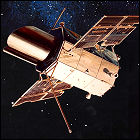 NASA launches the third and final Orbiting Astronomical Observatory satellite, given the nickname “Copernicus” when it successfully enters service near the 500th anniversary of the birth of the famed astronomer of the same name. OAO-3 is a joint venture between NASA and universities in the U.S. and the U.K., again focusing largely on ultraviolet observation of the sky, and it is instrumental in the discovery and study of long-period pulsars. OAO-3 will remain in service through February 1981, its successful nine-year mission lending weight to the ongoing construction and planning of NASA’s Space Telescope project, later to be known as the Hubble Space Telescope.
NASA launches the third and final Orbiting Astronomical Observatory satellite, given the nickname “Copernicus” when it successfully enters service near the 500th anniversary of the birth of the famed astronomer of the same name. OAO-3 is a joint venture between NASA and universities in the U.S. and the U.K., again focusing largely on ultraviolet observation of the sky, and it is instrumental in the discovery and study of long-period pulsars. OAO-3 will remain in service through February 1981, its successful nine-year mission lending weight to the ongoing construction and planning of NASA’s Space Telescope project, later to be known as the Hubble Space Telescope.
 The British science fiction series Doctor Who is broadcast in the United States for the first time on WPHL, an independent commercial TV station in Philadelphia. WPHL is among the first American stations to have purchased a syndication package of Doctor Who episodes, starrring Jon Pertwee as the third Doctor, from BBC Enterprises by way of Time-Life Television. The package includes the series’ first two color seasons, plus the first story from the 1972 season (the relatively recent Day Of The Daleks). The success of Star Trek reruns in syndication may well have indie stations convinced that Doctor Who is the next big thing…
The British science fiction series Doctor Who is broadcast in the United States for the first time on WPHL, an independent commercial TV station in Philadelphia. WPHL is among the first American stations to have purchased a syndication package of Doctor Who episodes, starrring Jon Pertwee as the third Doctor, from BBC Enterprises by way of Time-Life Television. The package includes the series’ first two color seasons, plus the first story from the 1972 season (the relatively recent Day Of The Daleks). The success of Star Trek reruns in syndication may well have indie stations convinced that Doctor Who is the next big thing…
 ITV airs the 32nd episode of Ace Of Wands, starring Michael MacKenzie, Petra Markham, and Roy Holder.
ITV airs the 32nd episode of Ace Of Wands, starring Michael MacKenzie, Petra Markham, and Roy Holder.
 ITV airs the 33rd episode of Ace Of Wands, starring Michael MacKenzie, Petra Markham, and Roy Holder.
ITV airs the 33rd episode of Ace Of Wands, starring Michael MacKenzie, Petra Markham, and Roy Holder.
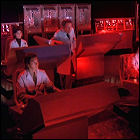 NBC premieres the first episode of Search, a “spy-fi” series created by Leslie Stevens (The Outer Limits) and starring Hugh O’Brian and Burgess Meredith. Maurice Evans (Planet Of The Apes) guest stars. The series pilot aired earlier in 1972 under the title PROBE.
NBC premieres the first episode of Search, a “spy-fi” series created by Leslie Stevens (The Outer Limits) and starring Hugh O’Brian and Burgess Meredith. Maurice Evans (Planet Of The Apes) guest stars. The series pilot aired earlier in 1972 under the title PROBE.
 NBC airs the second episode of the supernatural anthology series Ghost Story, produced by 1960s horror movie mogul William Castle and starring Sebastian Cabot. Jason Robards and Stella STevens guest star in a script written by Robert Specht (The Immortal, Ark II). (This series will be retitled Circle Of Fear in 1973.)
NBC airs the second episode of the supernatural anthology series Ghost Story, produced by 1960s horror movie mogul William Castle and starring Sebastian Cabot. Jason Robards and Stella STevens guest star in a script written by Robert Specht (The Immortal, Ark II). (This series will be retitled Circle Of Fear in 1973.)
 The second episode of Leslie Steven’s “spy-fi” series Search airs on NBC, starring Tony Franciosa and Burgess Meredith. Stefanie Powers (Hart To Hart) and Larry Linville (M*A*S*H) guest star.
The second episode of Leslie Steven’s “spy-fi” series Search airs on NBC, starring Tony Franciosa and Burgess Meredith. Stefanie Powers (Hart To Hart) and Larry Linville (M*A*S*H) guest star.
 NBC airs the third episode of the supernatural anthology series Ghost Story, produced by 1960s horror movie mogul William Castle and starring Sebastian Cabot. Gena Rowlands guest stars in a script based on a short story by Elizabeth Walter, and directed by future Superman movie director Richard Donner. (This series will be retitled Circle Of Fear in 1973.)
NBC airs the third episode of the supernatural anthology series Ghost Story, produced by 1960s horror movie mogul William Castle and starring Sebastian Cabot. Gena Rowlands guest stars in a script based on a short story by Elizabeth Walter, and directed by future Superman movie director Richard Donner. (This series will be retitled Circle Of Fear in 1973.)
 The 14th episode of The Sixth Sense airs on ABC, starring Gary Collins. Ed Nelson and Sharon Gless (Cagney & Lacey) guest star in the second season premiere.
The 14th episode of The Sixth Sense airs on ABC, starring Gary Collins. Ed Nelson and Sharon Gless (Cagney & Lacey) guest star in the second season premiere.
This series is not yet fully chronicled in the LogBook. You could help change that.
More about The Sixth Sense in the LogBook
 NBC airs the 30th episode of Night Gallery, an anthology series of original short plays and short story adaptations hosted by Rod Serling. Vincent Price and Bill Bixby guest star in the third season opener; the series has now been cut down to a half-hour time slot.
NBC airs the 30th episode of Night Gallery, an anthology series of original short plays and short story adaptations hosted by Rod Serling. Vincent Price and Bill Bixby guest star in the third season opener; the series has now been cut down to a half-hour time slot.
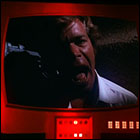 The third episode of Leslie Steven’s “spy-fi” series Search airs on NBC, starring Doug McClure and Burgess Meredith. Jeff Corey guest stars.
The third episode of Leslie Steven’s “spy-fi” series Search airs on NBC, starring Doug McClure and Burgess Meredith. Jeff Corey guest stars.
 NBC airs the fourth episode of the supernatural anthology series Ghost Story, produced by 1960s horror movie mogul William Castle and starring Sebastian Cabot. James Franciscus and Meg Foster guest star. (This series will be retitled Circle Of Fear in 1973.)
NBC airs the fourth episode of the supernatural anthology series Ghost Story, produced by 1960s horror movie mogul William Castle and starring Sebastian Cabot. James Franciscus and Meg Foster guest star. (This series will be retitled Circle Of Fear in 1973.)
 The 15th episode of The Sixth Sense airs on ABC, starring Gary Collins. Joan Crawford guest stars in what would prove to be her final on-screen role.
The 15th episode of The Sixth Sense airs on ABC, starring Gary Collins. Joan Crawford guest stars in what would prove to be her final on-screen role.
This series is not yet fully chronicled in the LogBook. You could help change that.
More about The Sixth Sense in the LogBook
 NBC airs the 31st episode of Night Gallery, an anthology series of original short plays and short story adaptations hosted by Rod Serling. James Farentino, John Astin, and Joanna Pettet guest star.
NBC airs the 31st episode of Night Gallery, an anthology series of original short plays and short story adaptations hosted by Rod Serling. James Farentino, John Astin, and Joanna Pettet guest star.
 The fourth episode of Leslie Steven’s “spy-fi” series Search airs on NBC, starring Hugh O’Brian and Burgess Meredith. Jo Ann Pflug guest stars.
The fourth episode of Leslie Steven’s “spy-fi” series Search airs on NBC, starring Hugh O’Brian and Burgess Meredith. Jo Ann Pflug guest stars.
 NBC airs the fifth episode of the supernatural anthology series Ghost Story, produced by 1960s horror movie mogul William Castle and starring Sebastian Cabot. Karen Black and Kaz Garas (Strange Report) guest star. (This series will be retitled Circle Of Fear in 1973.)
NBC airs the fifth episode of the supernatural anthology series Ghost Story, produced by 1960s horror movie mogul William Castle and starring Sebastian Cabot. Karen Black and Kaz Garas (Strange Report) guest star. (This series will be retitled Circle Of Fear in 1973.)
 The 16th episode of The Sixth Sense airs on ABC, starring Gary Collins. June Allyson guest stars.
The 16th episode of The Sixth Sense airs on ABC, starring Gary Collins. June Allyson guest stars.
This series is not yet fully chronicled in the LogBook. You could help change that.
More about The Sixth Sense in the LogBook
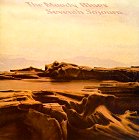 Decca Records releases the eighth album by the Moody Blues, Seventh Sojourn (the seven, in this case, referring to the seventh album by the band since the addition of Justin Hayward and John Lodge in the 1960s). The album includes the singles “Isn’t Life Strange” and “I’m Just a Singer in a Rock and Roll Band”.
Decca Records releases the eighth album by the Moody Blues, Seventh Sojourn (the seven, in this case, referring to the seventh album by the band since the addition of Justin Hayward and John Lodge in the 1960s). The album includes the singles “Isn’t Life Strange” and “I’m Just a Singer in a Rock and Roll Band”.
 The fifth episode of Leslie Steven’s “spy-fi” series Search airs on NBC, starring Tony Franciosa and Burgess Meredith. Louise Sorel guest stars.
The fifth episode of Leslie Steven’s “spy-fi” series Search airs on NBC, starring Tony Franciosa and Burgess Meredith. Louise Sorel guest stars.
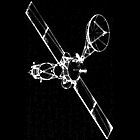 A working group of scientists and engineers at NASA submit an official proposal for a spacecraft using synthetic aperture radar to map the surface of the planet Venus. Conceived as a mission that could be launched from a Titan IIIe or from the space shuttle, both of which still exist only on the drawing board, Venus Orbiter Imaging Radar (or VOIR) is designed to offer extensive mapping of Venus at a resolution much better than the coarse resolution of radar signals originating from Earth-based radio astronomy facilities such as Arecibo, along with such cutting-edge technologies as stereoscopic imaging and solar electric propulsion. Work on this mission will continue through the early 1980s, at which point it is cancelled by NASA and replaced by a cheaper mission intended to achieve the same goals, Magellan.
A working group of scientists and engineers at NASA submit an official proposal for a spacecraft using synthetic aperture radar to map the surface of the planet Venus. Conceived as a mission that could be launched from a Titan IIIe or from the space shuttle, both of which still exist only on the drawing board, Venus Orbiter Imaging Radar (or VOIR) is designed to offer extensive mapping of Venus at a resolution much better than the coarse resolution of radar signals originating from Earth-based radio astronomy facilities such as Arecibo, along with such cutting-edge technologies as stereoscopic imaging and solar electric propulsion. Work on this mission will continue through the early 1980s, at which point it is cancelled by NASA and replaced by a cheaper mission intended to achieve the same goals, Magellan.
 NBC airs the sixth episode of the supernatural anthology series Ghost Story, produced by 1960s horror movie mogul William Castle and starring Sebastian Cabot. Steve Forrest and William Windom guest star. (This series will be retitled Circle Of Fear in 1973.)
NBC airs the sixth episode of the supernatural anthology series Ghost Story, produced by 1960s horror movie mogul William Castle and starring Sebastian Cabot. Steve Forrest and William Windom guest star. (This series will be retitled Circle Of Fear in 1973.)
 The 17th episode of The Sixth Sense airs on ABC, starring Gary Collins. Robert Foxworth (The Questor Tapes), Percy Rodrigues (Star Trek), and Patty Duke guest star.
The 17th episode of The Sixth Sense airs on ABC, starring Gary Collins. Robert Foxworth (The Questor Tapes), Percy Rodrigues (Star Trek), and Patty Duke guest star.
This series is not yet fully chronicled in the LogBook. You could help change that.
More about The Sixth Sense in the LogBook
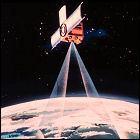 NASA and the National Oceanic & Atmospheric Administration launch NOAA-2, a weather satellite intended to operate in a near-polar low Earth orbit. NOAA-2 is based on the already-flown ITOS satellite design, and will function in orbit through October 1974, with a break of only a few months due to a failed vertical temperature profile radiometer instrument. NOAA-2 will be shut down in January 1975.
NASA and the National Oceanic & Atmospheric Administration launch NOAA-2, a weather satellite intended to operate in a near-polar low Earth orbit. NOAA-2 is based on the already-flown ITOS satellite design, and will function in orbit through October 1974, with a break of only a few months due to a failed vertical temperature profile radiometer instrument. NOAA-2 will be shut down in January 1975.
 NBC airs the 32nd episode of Night Gallery, an anthology series of original short plays and short story adaptations hosted by Rod Serling. Mickey Rooney guest stars.
NBC airs the 32nd episode of Night Gallery, an anthology series of original short plays and short story adaptations hosted by Rod Serling. Mickey Rooney guest stars.
 The sixth episode of Leslie Steven’s “spy-fi” series Search airs on NBC, starring Tony Franciosa and Burgess Meredith. Edward Mulhare (Knight Rider) guest stars.
The sixth episode of Leslie Steven’s “spy-fi” series Search airs on NBC, starring Tony Franciosa and Burgess Meredith. Edward Mulhare (Knight Rider) guest stars.
 NBC airs the seventh episode of the supernatural anthology series Ghost Story, produced by 1960s horror movie mogul William Castle and starring Sebastian Cabot. Helen Hayes and Charles Aidman guest star. (This series will be retitled Circle Of Fear in 1973.)
NBC airs the seventh episode of the supernatural anthology series Ghost Story, produced by 1960s horror movie mogul William Castle and starring Sebastian Cabot. Helen Hayes and Charles Aidman guest star. (This series will be retitled Circle Of Fear in 1973.)
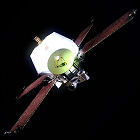 The unmanned NASA/JPL space probe Mariner 9 concludes its mission to map the surface of Mars. After spending more than a year as the first human spacecraft to orbit another planet in the solar system, Mariner 9’s fuel supply has run out, but not before it has obtained over 7,000 images of the surface of Mars, discovering gigantic volcanoes and huge canyons in the process. The detailed photography returned by Mariner 9 is a vitally important tool for scientists and mission planners already hard at work on a potential robotic landing mission to Mars, to be launched later in the 1970s. Though inactive, Mariner 9 remains in orbit of Mars.
The unmanned NASA/JPL space probe Mariner 9 concludes its mission to map the surface of Mars. After spending more than a year as the first human spacecraft to orbit another planet in the solar system, Mariner 9’s fuel supply has run out, but not before it has obtained over 7,000 images of the surface of Mars, discovering gigantic volcanoes and huge canyons in the process. The detailed photography returned by Mariner 9 is a vitally important tool for scientists and mission planners already hard at work on a potential robotic landing mission to Mars, to be launched later in the 1970s. Though inactive, Mariner 9 remains in orbit of Mars.
 The 18th episode of The Sixth Sense airs on ABC, starring Gary Collins. John Hillerman (Magnum P.I.) guest stars.
The 18th episode of The Sixth Sense airs on ABC, starring Gary Collins. John Hillerman (Magnum P.I.) guest stars.
This series is not yet fully chronicled in the LogBook. You could help change that.
More about The Sixth Sense in the LogBook
 NBC airs the 33rd episode of Night Gallery, an anthology series of original short plays and short story adaptations hosted by Rod Serling. Sandra Dee guest stars.
NBC airs the 33rd episode of Night Gallery, an anthology series of original short plays and short story adaptations hosted by Rod Serling. Sandra Dee guest stars.